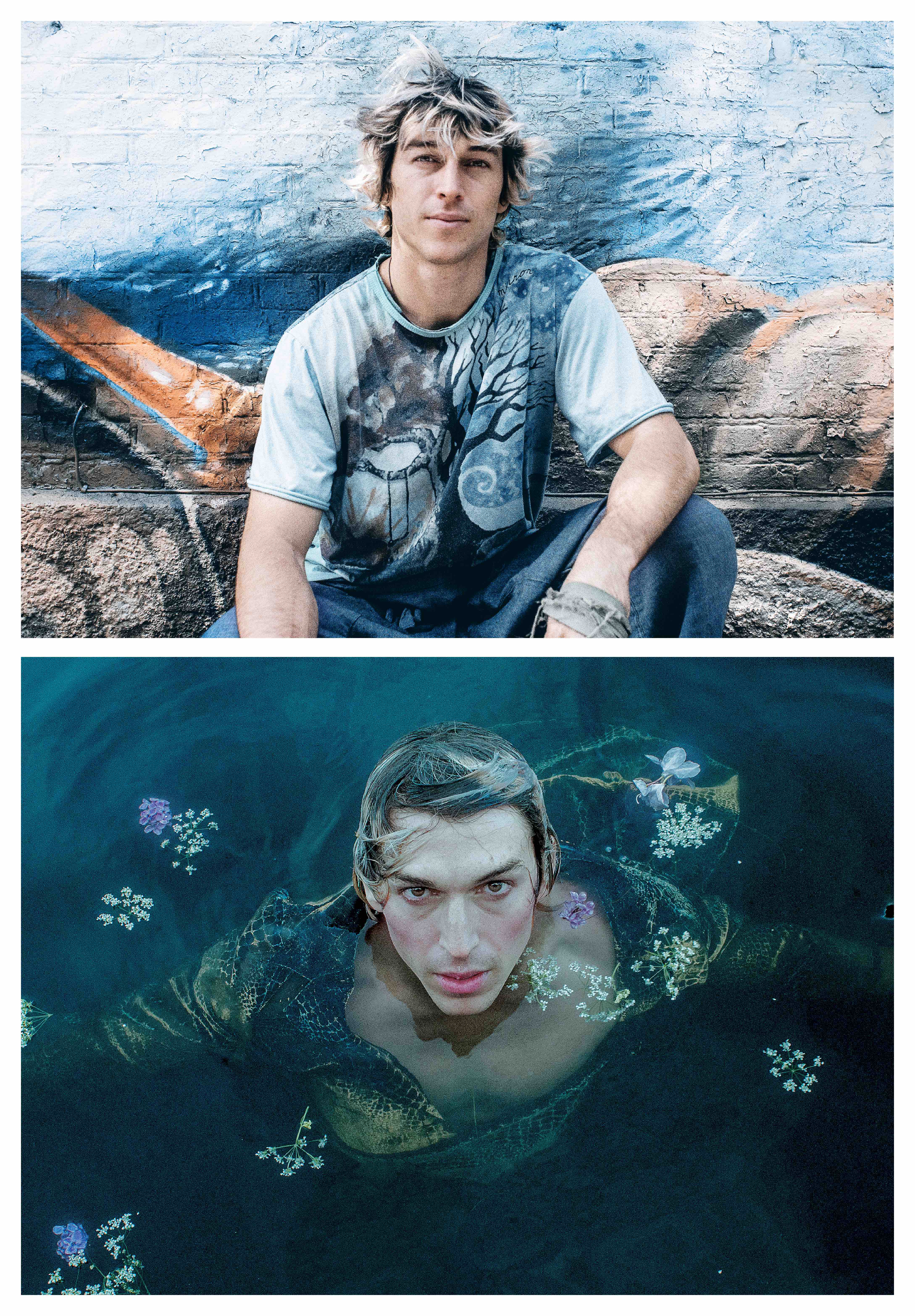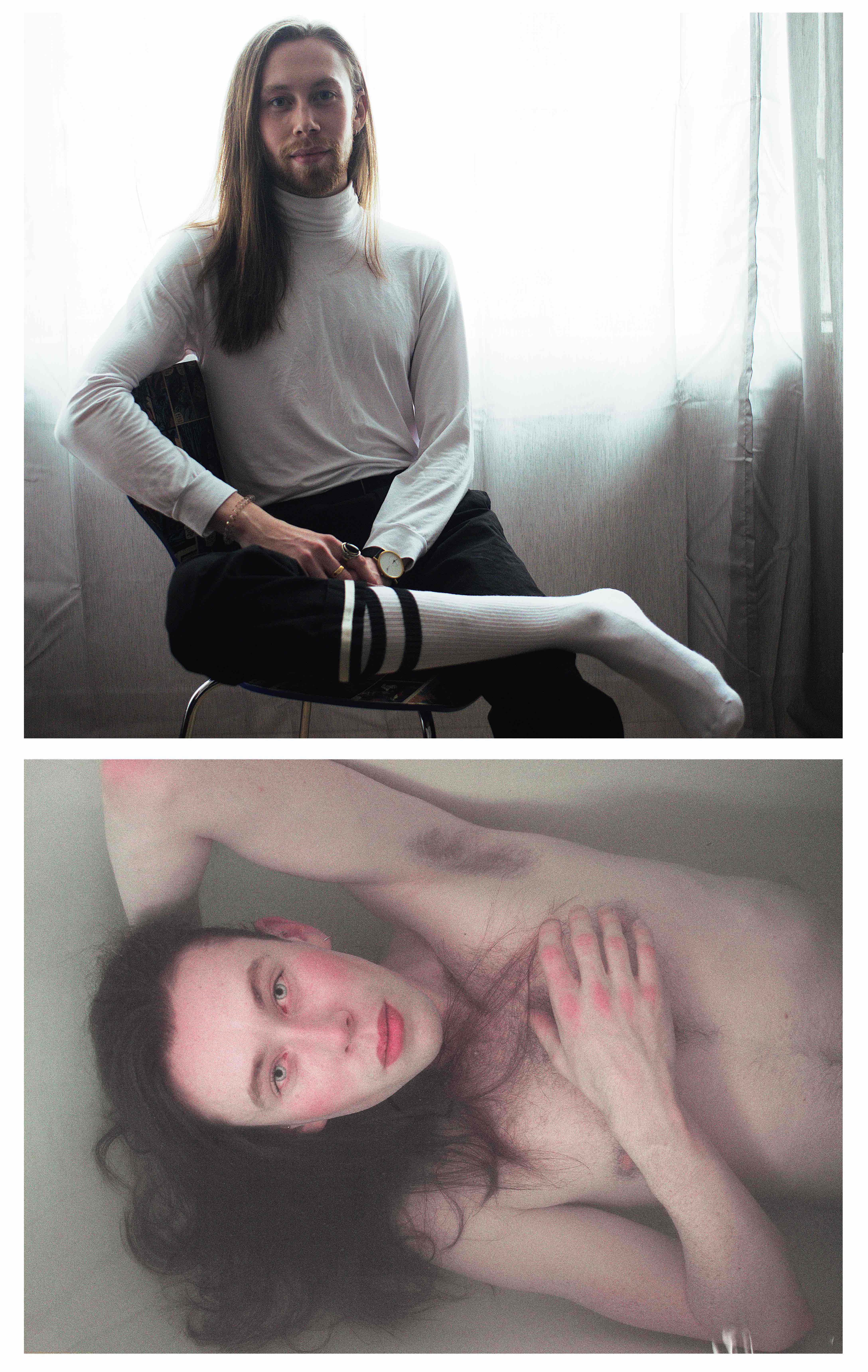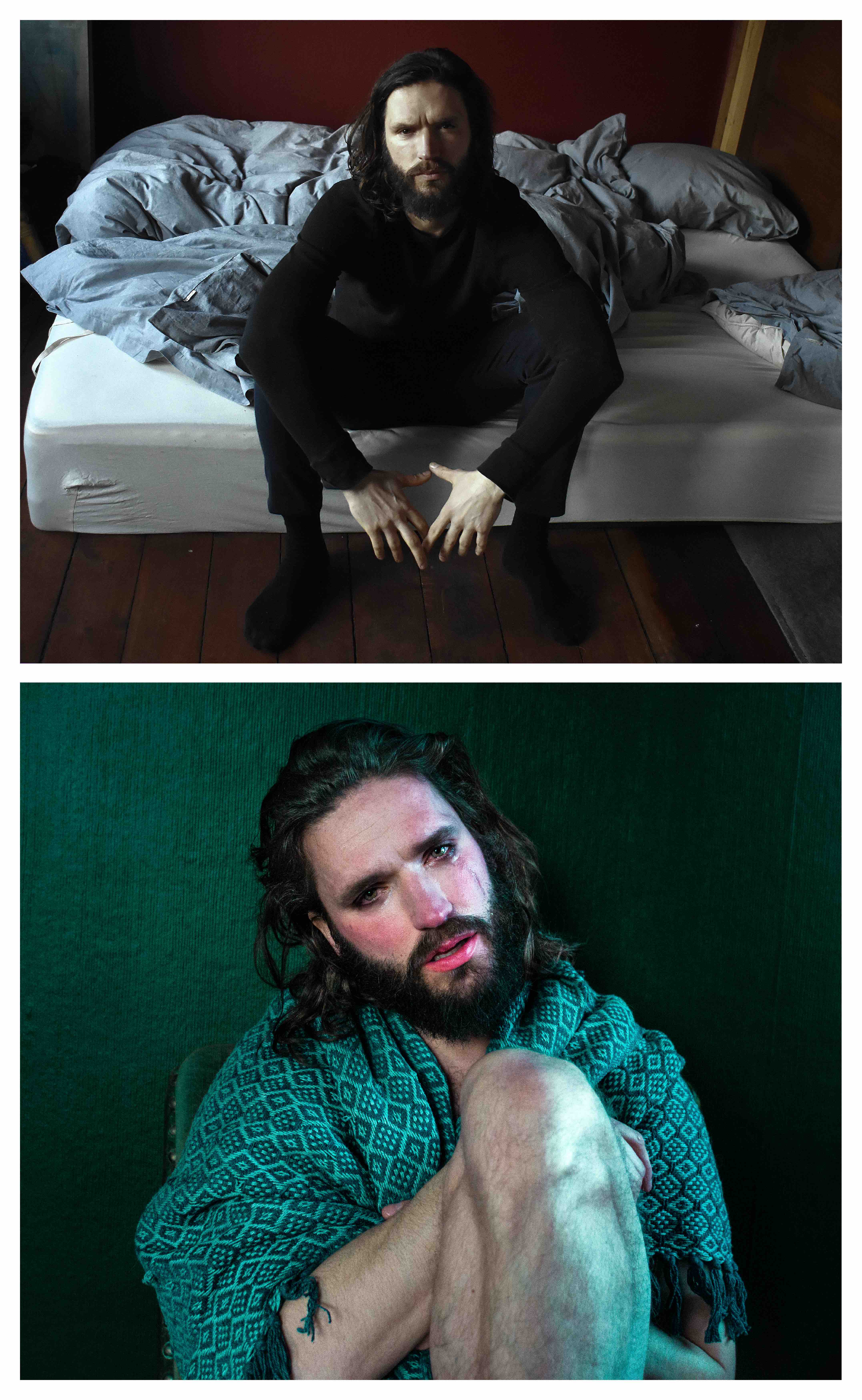This article originally appeared on Broadly Denmark.
Earlier this year, Danish photographer Marie Hyld participated in a workshop called “Feminine Purification.” In it, she and a group of other women worked on breaking down the barriers between their “feminine and masculine energies.” The day included dancing (badly), shouting, and getting sweaty. They also walked circles around an imaginary bonfire, threw their figurative “masks” from everyday life into it, and watched any fixed perceptions they had about themselves go up in flames.
Videos by VICE
“Human beings contain both masculine and feminine energies, regardless of gender. With that in mind, we worked as a group to make the boundaries between those energies more fluid. Since the group was exclusively women, this consisted primarily of unlocking and cultivating the masculine side in ourselves,” Hyld explained.
These exercises gave birth to the idea for Hyld’s latest photo series Tortuous. After the workshop, Hyld felt freed from unwritten rules about how she felt she was supposed behave as a woman. “I suddenly became aware that I’d been trudging along in the same old pattern—one that merely reflected what I thought other people wanted to see,” she told Broadly. So she decided to explore this epiphany through her photography.
She found her models on Tinder, just like in her last photo series, Lifeconstruction, in which she pretended to be in long-term relationships with people she had recently matched with. This time, she visited her models’ homes and photographed them as their authentic, unstaged selves. After that, she photographed them as they started playing with feminine and masculine expressions.
Broadly: You’ve chosen to have the models crossdress in this series. In a way, aren’t you reproducing common stereotypes about femininity and masculinity by doing this?
Marie Hyld: I came to the conclusion that in order to get my message across, I needed to create a sort of caricatured world where I used the same stereotypes about masculinity and femininity that I want to break with. It turned out that the crossdressing was also a huge help in getting my subjects to find those masculine and feminine qualities in themselves. It was as if the physical transformation helped them to get in touch with these different sides—it really made these qualities manifest on a psychic level.
What was it like shooting this series?
These meetings actually really got my heart racing. I shot the photos in their homes, so I was very much invading their space. I began by photographing them “as they are” under normal circumstances, and then we started playing around with the dressing-up, where I really tried to get them to draw on the feminine or masculine sides of themselves that they don’t normally express.
Often they were nervous, so they would drink wine or smoke a joint. Because I wanted to create a sense of comfort and intimacy between us, I’d partake in their drug of choice as well. Little by little, as the words began to flow, we’d usually hit a sweet spot where they felt they could open up and explore themselves. I have massive respect for all of them; it takes strength and an ability to be vulnerable to lie around exploring your psyche for a stranger behind a lens.
How about yourself? What did you get out of shooting these photos?
I’ve come to realize that I am free. That I have the opportunity to break from arbitrary ideas about how I’m supposed to act based on my gender. I also learned that I’m far from the only one who’s contended with these norms around masculinity and femininity. Lots of people blindly act out stereotypes and don’t tune into what’s buzzing beneath the surface.
Below you can see Marie Hyld’s photo series and the brief interviews she did with each model:

Lærke
“Much of my childhood was spent doing competitive dancing, which meant that from a very young age I got to go all-out with huge dresses, glitter, and makeup. I’ve always been quite vain. Even now, I spend most of my morning doing my makeup and hair, and I have my coffee and granola in front of the mirror.
I was surprised at how uncomfortable I was in front of the camera. The worst part was definitely having pictures taken of myself, lying there trying to be cutesy in pink clothes and stuff. I’m never doing that again.
Getting the makeup off was a process in itself. We started playing around with different mixed looks where both masculinity and femininity were present. But it wasn’t until the makeup came off that it clicked. Suddenly, sitting there huddled with Marie on the balcony, I forgot myself for a moment and found the male persona I wanted to project. He was domineering and grimy. It gave me a really fun feeling of raunchiness and brutishness that I carried with me the rest of the day. I actually didn’t take off the boxer shorts or wash off the mustache until the next day.”

Josh
“When I first saw the picture of myself where I’m exploring femininity, my first thought was: ‘Fuck, that’s so gay.’ I felt uncomfortable about it; I didn’t like seeing myself portrayed like that. I’ve got blush, lipstick, and mascara on—I look feminine. ‘I look so girly,’ I thought.
But then I thought, wait a second. Why am I associating femininity with homosexuality? Why is the word ‘gay’ something negative in my mind? And why do I feel shame at the thought of people sitting at home looking at this picture of me? Homosexuality doesn’t eliminate masculinity. ‘Gay’ as a sexual [orientation] isn’t a negative thing. And why I am I concerned with what people think, anyway?
It dawned on me that this voice in my head was an echo of my upbringing. It’s the voice that says not to stand out, that says that people will judge you. That feminine qualities in a man are a form of weakness. I realized I needed to rip all of that indoctrinated nonsense out of me. So I started to reprogram myself. I learned that I shouldn’t care what other people think. I learned that just because the way I express myself may bother someone, doesn’t mean it’s bad—it means that whoever’s judging me is the one who has a problem. I learned that femininity is beautiful and powerful. I changed my own patterns of thinking. For all of these reasons, I love this photo.”

Karoline
“I feel pretty mutable in my visual presentation. Some days I feel strong in red lipstick, other days I need the most gender-neutral clothing possible to feel comfortable. I have found some peace in feminine expressions over the past couple of years, although historically, I’ve always felt most powerful and in balance with a more androgynous look. I guess I feel more comfortable in androgyny because of my height and my boyish stature—but equally so because I grew up in a society where it’s still the pant-wearing gender that’s deciding most things. So naturally, young Karoline preferred attire that wasn’t as feminine. She wanted to be heard.
Although I’ve found power in femininity now, I could clearly feel this power shift happening during the photoshoot: I felt exposed and uneasy when the pictures of my feminine side were being taken, whereas I felt strong and unwavering in the androgynous look. When I was supposed to be acting out femininity, I was constantly thinking I needed to be pretty—‘I’m a woman, I’m supposed to be pretty.’ But with the androgynous character, it wasn’t about creating pretty pictures. It was about creating powerful ones.”

Morten
“As a former soccer player, I’ve been raised in a very macho culture for as long as I can remember. But I do think that all men possess femininity within them, just as all women possess masculinity.
During most of the time I spent with Marie, it was super awkward to be in my own body. But there were also moments where the whole situation was in ‘flow.’ The fact I was able to achieve that kind of a mental a state has helped me accept the existence of my feminine side. And more importantly, my time with Marie helped me come to some realizations—like how difficult it was to relinquish power and really let go of my masculinity over the course of a few minutes.
It made me realize two things: how much power women acquire by adopting a more masculine style, and even more so, how much power men give up by expressing anything that’s deemed feminine. Huge respect to anyone who has the courage to be themselves and be as feminine or masculine as they want.”

Maja
“We walk around the apartment a bit to find a good spot while we brainstorm and rummage around in my clothes. Everything happens spontaneously—one idea gives rise to another. Marie does my makeup, and I end up in a tank top and a pair of boxer shorts. We decide on cigarettes and beer cans. She clicks away as I stand there with a big old sock in my shorts, looking like someone out of a trailer park.
It’s really fun, and it’s hard to keep a straight face. I don’t really have time to think about what’s happening. When we’re finished, Marie is quickly out the door again, and I’m completely dazed.
I tumble onto the couch and let my thoughts wander. I take pleasure in the fact that in this day and age, we have the freedom to play around with appearances. That we don’t have to fit into a specific box. Although there are still many things to get mad about and many fights to be taken up, I think it’s amazing that so many people rise to the occasion and stand by who, what, and how they are.”

Frederik
“The truth is that I feel extremely sexy in lingerie, and like to top it off with a little lipstick. When I was younger, I internalized the fact that it was shameful to be in touch with your feminine side. I was definitely unconsciously suppressing that side of myself back then. Now I think it’s fun to challenge people in their preconceptions about what it means to be a ‘real man.’ Especially because my day-to-day life takes place in a decidedly male-dominated blue collar environment, where fear of the unknown and judgmental attitudes are ever-present.
One time, one of my co-workers started following me on social media. We were working a shift together one gray day when he stumbled across a picture of me in ‘ladies’ clothes.’ In this picture, I was at the laundromat, dressed only in a sweater, pink panties and garters, and was leaning sensually against the washing machine, laundry in hand. He panicked and had no idea how to react. He was so obviously uncomfortable. Of course in this situation I chose to laugh at it, but it’s pretty unfortunate that we haven’t made it further as a society.”

Naomi
“For a long time, I’ve experienced parts of my personality and appearance as masculine, and I wanted to be able to give them free reign. As part of that, I needed to explore my femininity and female identity. During the photoshoot, I felt a clear shift in my feelings about the project in the transition from the role of “myself” to my masculine counterpart. I felt more free to play with different expressions in the male role. My vanity wasn’t holding me back anymore.
As a woman, I feel like my femininity is constantly being defined by the world around me. I’m evaluated and measured not only on my appearance, but my choices as well: what I wear, the things I do, and how I present myself. I feel very judged on how I conform to traditional female gender roles, but also on how well I’m shunning them. I’m objectified and diminished to such an extent that my personal qualities aren’t paid attention to. I’m not recognized as a person with complicated thoughts, feelings, and goals. Instead I feel like a mirror for the unattainable and often contradictory demands that are made on women and femininity.
In contrast to that, I felt very present in my mind and body as my male alter ego. I felt good about showing myself off. I felt physically and mentally strong, attractive, and interesting—not because I associate these traits with masculinity, but because I actually AM those things. Even though I’m a woman. And even though I’m ‘feminine.’”

Michael
“I’ve somehow never truly felt like a ‘man’ because I’ve never identified with traditional masculinity. Today I feel like I’ve settled into my own way of expressing masculinity. People like Brian Molko and Bowie with his androgynous stylings were a big source of inspiration in my teenage years—they both played fearlessly with the classic binary gender roles. The older I’ve gotten, the more comfortable I’ve become with my desire to explore different aspects of my personality and define ‘manliness’ on my own terms.
It was interesting that I felt more comfortable and self-assured lying naked in a bathtub with a stranger in the room than I do in my everyday life. That liberated feeling says a lot about how narrow and restricted the traditional gender categories are—especially for people that don’t identify as a ‘man’ or a ‘woman.’
The world is sadly a dangerous place for transgender and genderqueer people. It won’t change until people realize that we don’t have to express ourselves in the way that’s expected of us based on biological sex, and that human identity is fundamentally uncategorizable. We have to accept it so that we can better support the queer community. It’s actually the least we can do to thank them for being courageous enough to challenge societal norms.”

Mads
“It’s fascinating how social structures influence us. I’ve played soccer since I was four years old. In that realm, my experience has been that any deviation from masculinity is seen as wrong. The whole team brims with a macho energy that’s about keeping each other in check so no one slips out of that rigid mold. ‘Gay’ is seen as an insult. If someone’s natural disposition should fall outside of the classically masculine, they try to blend into the crowd as much as possible. And with good reason. Fear and shame are daunting opponents.
Personally, I’m starting to become more free and open in my thoughts and not as terrified as I’ve been in the past. It’s part of a self-improvement process. I’ve found a more nuanced side of myself where masculine and feminine energies are more fluid.
Luckily, things today are developing in such a way that there’s a little more room for diversity. But we still have a way to go—that’s why I took part in Marie’s project. To help show that things don’t have to be a certain way, but that there are other ways to be, and that’s completely normal. I think it’s an important thing for those of us that feel ‘wrong’ to know. And especially for people who still hold judgment in their hearts to see and read.”
To see more of Marie Hyld’s work, visit her website and follow her on Instagram.
More
From VICE
-

Screenshot: GSC Game World -

Collage by VICE -

Screenshot: Crave Entertainment -

Screenshot: Sony Interactive Entertainment
